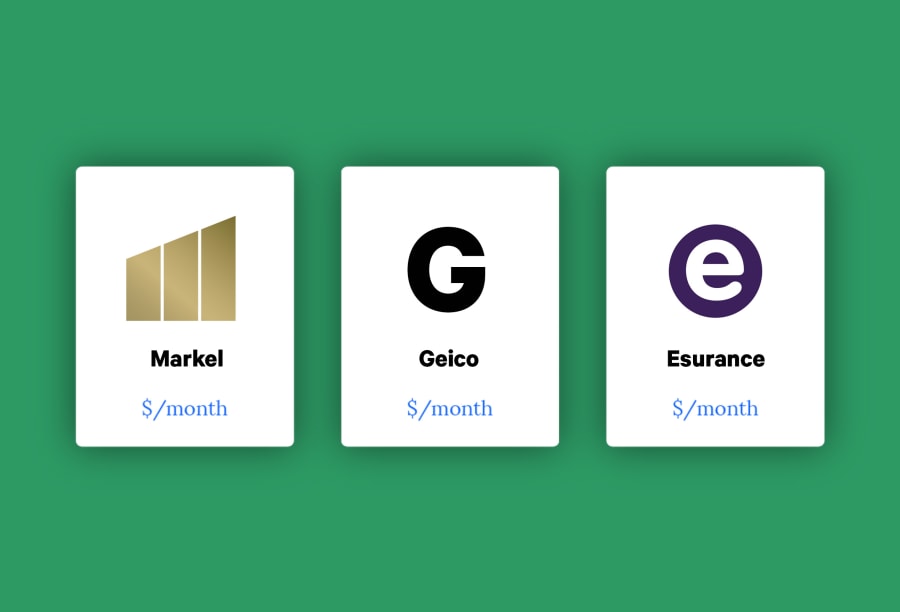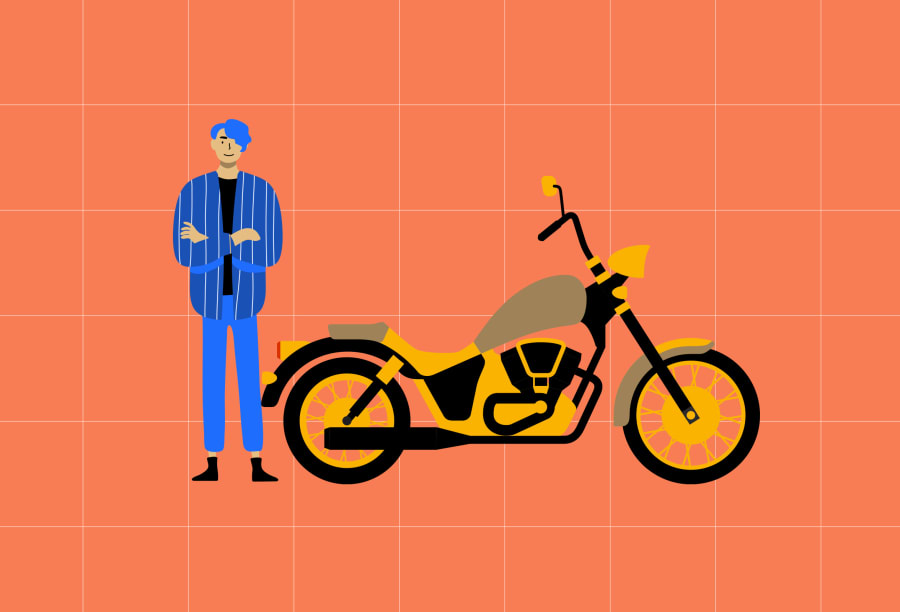California Laws for Mopeds, Scooters and Other Motorized Bikes
Find Cheap Motorcycle Insurance Quotes in Your Area
Mopeds, scooters and motorized bicycles are each defined and treated differently by California law. In California, you don't need a driver's license to ride an electric bike, but you will need one to operate a moped or motorized scooter.
California motorized scooter laws
In California, a motorized scooter (also called an electric scooter) is defined as a two-wheeled device that has a floorboard designed to be stood upon when riding. More specifically, it has:
- Two wheels
- Handlebars
- A floorboard
- A motor that powers the vehicle
A motorized scooter can have a seat for the operator, but this isn’t a defining feature of a scooter under California law.
You can operate a scooter with any class of driver’s license in California. This means that you don’t need a license specifically for scooters, but you do need to have a regular driver’s license. And while motorized scooters are street-legal, they don't need to be registered with the DMV or carry license plates.
While on the road, motorized scooter riders need to obey the same traffic and safety laws as all other vehicles. However, there are also some scooter-specific restrictions in California:
- The driver needs to wear a U.S. Department of Transportation-compliant helmet at all times.
- Scooters can’t be ridden on roads with a speed limit greater than 25 miles per hour, unless there is a bike lane, in which case the scooter can only be ridden within it.
- As with other vehicles, motorized scooters should not be operated on sidewalks.
- There cannot be a passenger on scooters, just the driver.
- Motorized scooters shouldn’t be driven faster than 15 miles per hour on the road.
These regulations apply to standard motorized scooters. Mobility scooters, on the other hand, can be driven at up to 30 miles per hour on the road. However, this law only applies to mobility scooters operated by seniors or those with a physical disability.
California moped and motorized bicycle laws
In California, a moped and motorized bicycle are classified in the same way. By definition, they are vehicles with the following characteristics:
- Two or three wheels
- An automatic transmission
- Pedals, if not entirely propelled by its motor, otherwise then no pedals if powered solely by electrical energy
- Maximum speed of under 30 miles per hour on level ground
If your vehicle is called a "moped" but doesn’t go faster than 20 miles per hour, you should confirm potential requirements with the DMV before operating one on public roads.
In order to drive a moped or motorized bicycle on public roads, you'll need to carry an M1 or M2 motorcycle license. You also need to register your moped with the DMV and obtain a license plate for it. Unlike car registration, moped registration is a one-time process with no renewal requirement.
When you register your moped, you’ll also receive a moped ID card, or registration card, which acts as your proof of ownership. You should carry your moped ID card at all times when operating the moped. Moped riders also need to wear an approved safety helmet when riding on public roads.
California electric bicycle laws
An electric bicycle is defined by having pedals and an electric motor with fewer than 750 watts. There are three different classes of electric bikes:
- Class 1 electric bicycle: A bicycle with an electric motor that activates when the rider is pedaling and deactivates once the bike reaches 20 miles per hour.
- Class 2 electric bicycle: A bicycle with an electric motor that can propel the bike without the rider pedaling. The motor cannot be capable of providing assistance when the bicycle reaches the speed of 20 miles per hour.
- Class 3 electric bicycle: A bicycle with a speedometer and a pedal-assist electric motor that stops providing power once the bike reaches 28 miles per hour. You must be at least 16 years old to operate class 3 electric bicycles.
Electric bicycles are street-legal in California, but you don’t need a license or registration in order to operate one on the road. However, electric bicycle riders must wear a DOT-approved safety helmet if they are under the age of 18 or are operating a class three electric bike. In addition, electric bikes can only be ridden by one person at a time — you can’t carry passengers.
Other motorized vehicles
There are a few additional classes of motorized vehicles, some of which are street legal in California.
Class | Street legal? | Laws |
|---|---|---|
| Motorcycles | Yes | A motorcycle is defined as a vehicle with two or three wheels and an engine 150 cubic centimeters (cc) or larger. To ride a motorcycle in California, you need an M1 motorcycle license, proof of insurance, and a DOT-approved helmet. If your motorcycle has three wheels or a sidecar, you only need a Class C license. |
| Motor-driven cycle | Local roads only | A motor-driven cycle is like a motorcycle but with an engine that is 149 cc or smaller, so it can’t be driven on freeways. Riding a motor-driven cycle requires DMV registration, proof of insurance and an M1 motorcycle license. |
| Dirt bike | Mostly no | The regulation of dirt bikes in California is a complex situation involving emissions standards, model years and required modifications. Check with the DMV to see whether your bike is eligible for street use. |
| Mini bikes | No | Also referred to as pocket bikes or mini motorcycles, mini bikes are not street legal in California. |
Do you need insurance for a moped or scooter in California?
You are not required to get insurance coverage to ride a moped or motorized scooter in California.
While youaren’t required to carry insurance while operating a moped inCalifornia, should you get into an accident, you would still be liable for any injuries or damage. It may be worth your while then to carry a minimum amount of liability insurance:
- $15,000 of bodily injury coverage per person
- $30,000 of bodily injury coverage per accident
- $5,000 of property damage coverage per accident
If you’ve leased or financed your moped, your lender may enforce its own set of insurance requirements as part of the loan agreement. These requirements may mandate that you purchase coverage above and beyond the state minimums.
Find Cheap Motorcycle Insurance Quotes in Your Area
Editorial Note: The content of this article is based on the author’s opinions and recommendations alone. It has not been previewed, commissioned or otherwise endorsed by any of our network partners.


